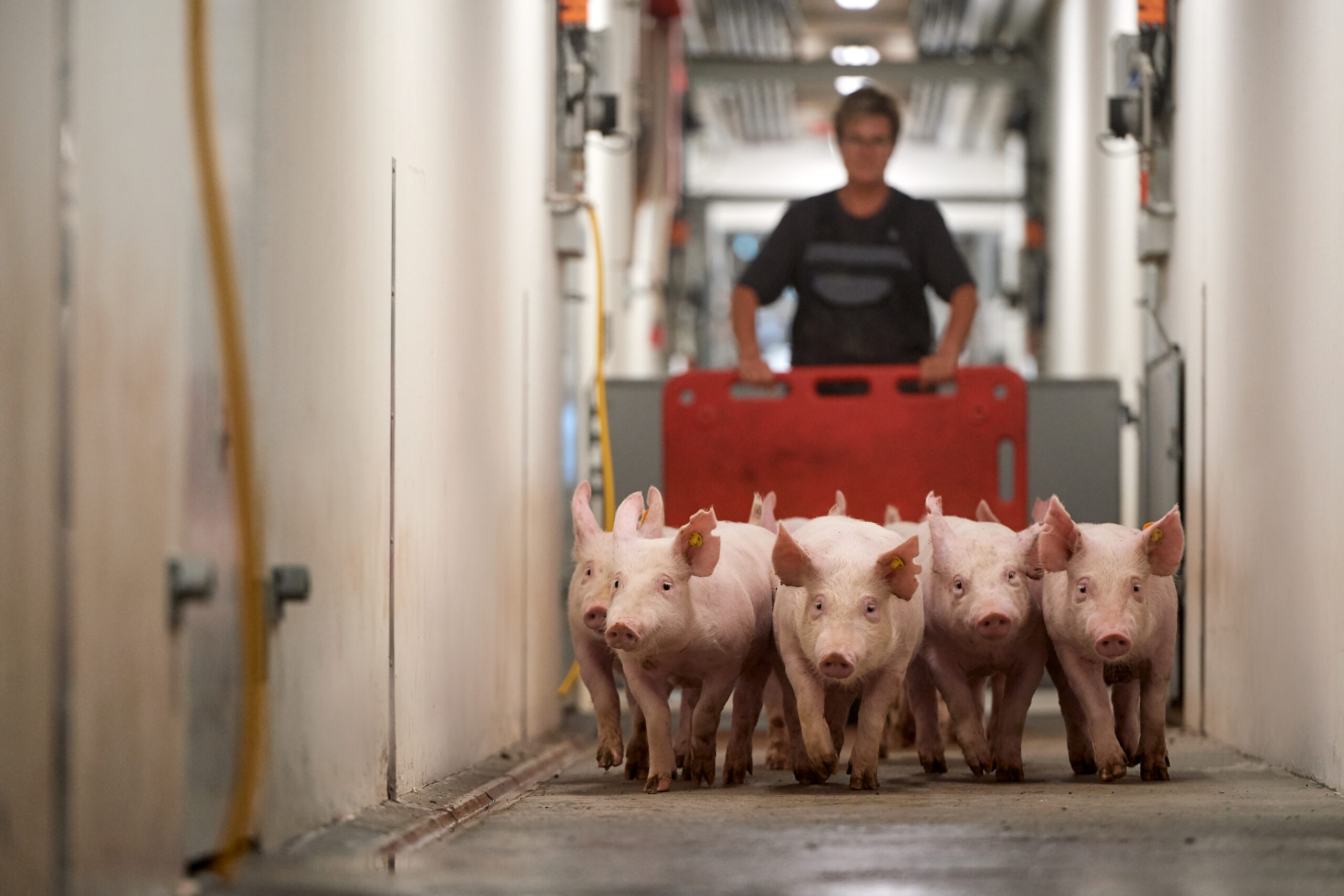The DanBred crossbred finishers demonstrate superior levels of health and robustness, thus leading to a reduced need for disease treatment.
Sustainable pig production requires healthy pigs, and the DanBred breeding programme therefore aims to increase the pigs’ innate ability to resist diseases. One of the breeding strategies employed to increase innate disease resistance is to use three-way crossbreds in pig production, thus reaping the full beneficial contribution from heterosis. Heterosis is defined as the progeny performing better than the average of the parents. In terms of crossbreeding, this means that a DanBred crossbred typically performs better than the average of the respective purebreds.
Bjarne Nielsen, Senior Scientist at Danish Pig Research Centre, says: “The DanBred three-way crossbreeding system can be used to improve innate disease resistance, because crossbred pigs have the advantage of heterosis. In fact, heterosis typically has a substantial positive effect on health in particular”.
The difference in disease resistance between purebred DanBred Duroc and DanBred crossbred finishers was part of a large project on genomic selection and crossbreeding for the continued research and development of the DanBred breeding programme and was carried out by the Danish Pig Research Centre in collaboration with the University of Aarhus. In the trial, treatment frequencies were recorded and compared at the Bøgildgård DanBred boar testing station for 2,552 DanBred crossbred finishers and 3,463 of their purebred DanBred Duroc paternal half-sibs as a reflection of disease resistance.
Maximum heterosis for Health
The purebred DanBred Duroc and DanBred crossbreds perform at the same high level when it comes to traits such as growth and feed efficiency. The reason purebred Durocs are not used as finishers is that a higher rate of genetic gain for both production and reproduction traits make the crossbreds the optimal choice for finisher production. Additionally, this particular project clearly illustrates that crossbreds have superior health and are very robust.
The treatment frequencies are markedly enhanced in the DanBred crossbreds in comparison with purebred Durocs, with the largest differences recorded for diarrhea, encephalitis, and pulmonary disease treatments. The trial show that the treatment frequency for the DanBred crossbreds in relation to diarrhea and encephalitis is only half of that of purebred Durocs. In relation to pulmonary disease, the frequency is approximately 25 % lower and the treatment frequency for leg disorders and lameness is almost 40 % lower.
The three-way crossbreeding system used by DanBred is therefore ideal for achieving a high degree of innate disease resistance. In fact, compared to other types of crossbreeding systems (e.g. rotational breeding or synthetic breeds), this particular breeding system maximises heterosis – not only for health, but for all other traits as well, thus greatly benefitting DanBred’s global customer base.
Increasingly robust pigs in the future
A continued increase in genetic robustness is a focal point of the DanBred breeding programme. For example, in 2019, a new method for evaluating the hereditary potential for strong and healthy legs and backs was developed, which greatly improved the accuracy of selection for conformation. In the future, DanBred breeding stock are expected to be even more robust due to the continued research and development of the DanBred breeding programme in the fields of sow longevity using production data and the survival of pigs until slaughter using a newly developed breeding value.
Sources:
SEGES Publication No 1092 (2016) & No 1093 (2016)










